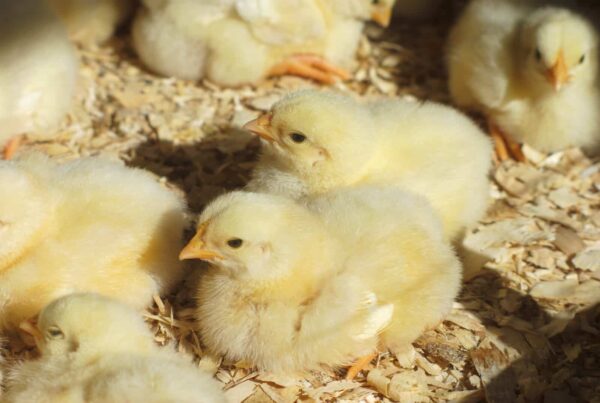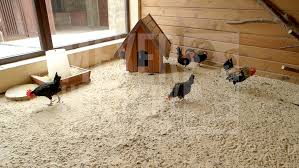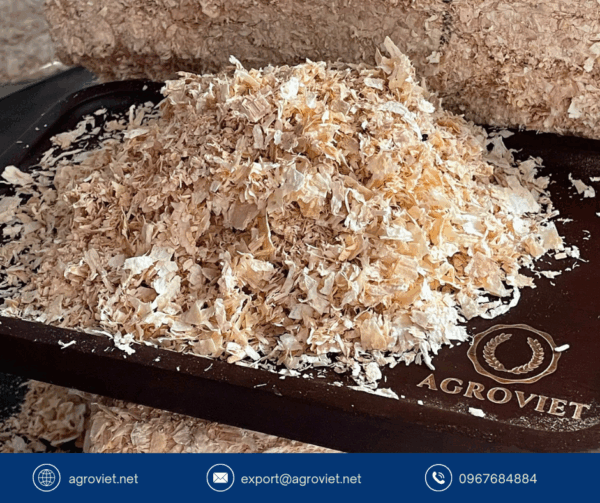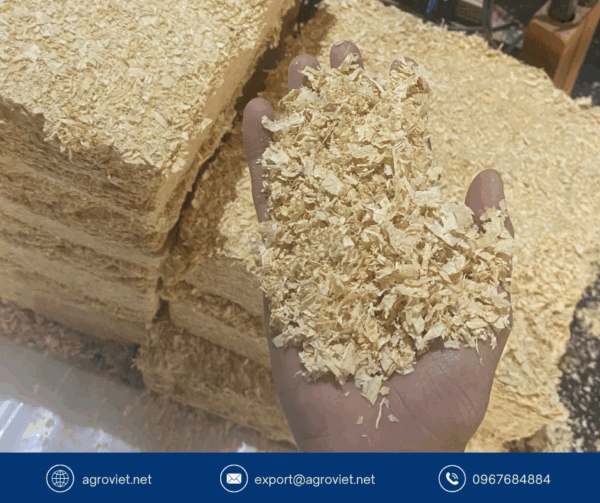Coccidiosis Outbreak? Poor Bedding May Be to Blame – Protect Your Flock with Clean Wood Shavings
Introduction to Coccidiosis in Poultry
Coccidiosis, a protozoal disease caused by Eimeria species, is a major threat to poultry, leading to diarrhea, weight loss, reduced egg production, and significant mortality. According to the MSD Veterinary Manual, it is one of the most economically damaging diseases in the poultry industry, with outbreaks causing 20–30% flock mortality in severe cases.
Poor bedding hygiene, particularly wet or soiled litter, is a key driver of coccidiosis outbreaks, as it provides an ideal environment for Eimeria oocysts to thrive. Clean, absorbent bedding like wood shavings can significantly reduce litter moisture and pathogen load, protecting flocks and minimizing economic losses. This post explores the link between poor bedding and coccidiosis, its economic impact, and how wood shavings offer a cost-effective solution for prevention.
Understanding Coccidiosis and Its Causes
Coccidiosis is caused by protozoa of the genus Eimeria, which infect specific intestinal sites, causing rapid tissue damage over 4–7 days. The MSD Veterinary Manual highlights that species like E. acervulina, E. maxima, and E. tenella are particularly pathogenic, leading to lesions, bloody diarrhea, and poor growth.
The disease spreads through oral ingestion of sporulated oocysts in contaminated litter, with wet bedding amplifying transmission by maintaining high moisture levels (above 30%) that favor oocyst survival. Poor bedding hygiene, high flock density, and stress exacerbate outbreaks, making litter management critical for prevention.
Watch this: https://www.youtube.com/watch?v=54FY3KiB08I
The Role of Poor Bedding in Coccidiosis Outbreaks
Wet or soiled bedding, such as straw or low-quality sawdust, creates a perfect habitat for Eimeria oocysts. The MSD Veterinary Manual notes that oocysts thrive in moist, heavily soiled litter, with pathogen loads reaching 10^6 oocysts per gram in damp conditions. Non-absorbent bedding fails to manage urine, manure, or water spills, leading to litter moisture levels of 30–50%, which prolong oocyst viability for weeks. This increases infection rates by 25–30% compared to dry litter environments.
Additionally, wet bedding fosters secondary bacterial infections like Clostridium perfringens, which can cause necrotic enteritis, further compounding mortality and losses.
Health and Mortality Risks
Coccidiosis poses severe health risks, particularly in young birds aged 1–4 months. The MSD Veterinary Manual reports that severe infections cause extensive intestinal damage, leading to diarrhea, dehydration, and weight loss. In commercial and backyard flocks, mortality rates can reach 20–30% during outbreaks, with game birds like quail facing losses up to 50%. Subclinical infections, while less visible, reduce feed efficiency and growth by 10–20%, contributing to economic losses.
Severe cases, particularly from E. tenella or E. necatrix, can result in cecal cores or intestinal hemorrhages, increasing mortality risk if secondary infections occur. Poor bedding hygiene amplifies these risks by sustaining high oocyst loads and compromising flock immunity.
Economic Impact of Coccidiosis
The economic toll of coccidiosis is substantial. LLM Farm Vets estimates that a single outbreak in a 1,000-bird flock can cost $5,000–$15,000 due to mortality, treatment, and production losses. Veterinary costs, including diagnostics (fecal flotation, $50–$200 per test) and treatments (anticoccidials like amprolium, $10–$50 per bird), add up quickly. Discarded eggs or meat from affected birds incur losses of $2–$5 per bird, while reduced growth and egg production cost $10–$20 per bird.
For a 1,000-bird flock with 20–30% mortality, losses range from $4,000–$9,000 in dead birds alone, excluding culling ($50–$200 per bird) and long-term productivity declines. Poor bedding hygiene drives these costs by facilitating oocyst proliferation and disease spread.
Why Dry Bedding is Essential
Dry, absorbent bedding is critical for controlling coccidiosis by reducing litter moisture and oocyst survival. The MSD Veterinary Manual emphasizes that poultry raised on wire floors, which separate birds from feces, rarely develop clinical coccidiosis, highlighting the role of litter hygiene.
Absorbent bedding like wood shavings maintains litter moisture below 20%, inhibiting oocyst sporulation and reducing infection risk by 20–30%. Unlike straw, which traps moisture, or sawdust, which generates dust and compacts, wood shavings provide a loose, dry surface that minimizes pathogen buildup and supports flock health.
Economic Benefits of Wood Shavings
Using clean wood shavings offers significant economic advantages over non-absorbent bedding. A 1-ton pallet of wood shavings ($150–$250) lasts 2–3 months for a 1,000-bird flock, costing $600–$1,000 annually. In contrast, straw ($50–$100 per ton) requires replacement every 1–2 weeks, costing $1,200–$3,600 annually for the same flock. By reducing coccidiosis incidence by 20–30%, wood shavings can lower mortality from 30% to 20–23%, saving $1,000–$3,000 in dead birds and $2,000–$5,000 in treatment and production losses per outbreak.
The University of Maine Cooperative Extension notes that absorbent bedding reduces labor and waste disposal costs, further enhancing savings. For a 1,000-bird flock, total annual savings from wood shavings can reach $3,000–$8,000 compared to straw.
Promoting Flock Health with Wood Shavings
Wood shavings, sourced from untreated softwoods like pine, are an ideal bedding choice for preventing coccidiosis. Their medium absorbency (up to 200% of weight) and low-dust properties keep litter dry and reduce aerosolized pathogen spread. Heat-treated shavings have low microbial loads, minimizing initial contamination.
When spread as a 4–6 inch layer and topped up weekly, wood shavings create a hygienic, comfortable environment that supports bird health and reduces stress, which can otherwise exacerbate coccidiosis. The MSD Veterinary Manual confirms that dry bedding reduces environmental oocyst loads, helping farms achieve infection rates as low as 10–15 cases per 100 birds, compared to the industry average of 20–40 cases.
Cost-Benefit Analysis
For a 1,000-bird flock, poor bedding like straw leads to coccidiosis outbreaks costing $5,000–$15,000, including $2,000–$6,000 in mortality (20–30% loss), $1,000–$5,000 in treatments, and $2,000–$4,000 in reduced production. Using wood shavings ($600–$1,000 annually) reduces outbreak frequency and severity, cutting mortality to 20–23% and total costs to $3,000–$8,000 per outbreak. This yields savings of $2,000–$7,000 per outbreak, plus $600–$2,600 in reduced bedding and labor costs annually. Lower culling rates save $50–$200 per bird, and improved egg production adds $1–$2 per bird, enhancing long-term profitability.
Long-Term Economic Advantages
Dry bedding like wood shavings provides lasting economic benefits by reducing coccidiosis recurrence and improving flock performance. The MSD Veterinary Manual notes that species-specific immunity develops after infection, but wet bedding sustains high oocyst loads, increasing reinfection risk. Wood shavings minimize this cycle, supporting immunity and reducing subclinical infections that cost $10–$20 per bird in growth losses.
Farms using dry bedding report 10–20% higher feed efficiency and egg production, saving $2,000–$5,000 annually for a 1,000-bird flock. Reduced antibiotic use aligns with regulations, avoiding penalties and supporting market access, further boosting profitability.
Practical Tips for Bedding Management
To prevent coccidiosis, farmers should spread 4–6 inches of wood shavings in coops, topping up with 1–2 inches weekly to maintain absorbency. Daily cleaning to remove soiled litter prevents oocyst buildup, as recommended by the MSD Veterinary Manual.
Ventilation providing 6–8 air changes per hour keeps litter dry, while storing shavings in a dry area prevents mold. Sourcing from reputable suppliers ensures low-dust, non-toxic shavings, optimizing health benefits and reducing labor costs.
Complementary Prevention Strategies
In addition to dry bedding, farmers can use anticoccidial drugs like monensin or salinomycin in feed, costing $10–$50 per ton, to prevent outbreaks. Vaccination at day-old chicks, as noted by PoultryHub Australia, builds immunity but requires careful management to avoid interference from medicated feed.
Regular fecal testing ($50–$200 per test) detects oocysts early, while sanitation of equipment and waterers reduces contamination. Managing flock density and stress further lowers infection risk, supporting the effectiveness of dry bedding.
Welfare and Regulatory Benefits
Dry bedding enhances poultry welfare by reducing diarrhea, dehydration, and stress, aligning with ethical farming standards. Lower coccidiosis rates decrease antibiotic use, meeting consumer demand for sustainable production and avoiding regulatory penalties. The MSD Veterinary Manual emphasizes that hygienic bedding is a cornerstone of disease control, supporting flock health and market competitiveness. Improved welfare also reduces culling, saving $50–$200 per bird and enhancing farm reputation.
Addressing Bedding Management Challenges
Wood shavings have a higher upfront cost ($150–$250 per ton) than straw ($50–$100), but their durability reduces replacement frequency, saving $600–$2,600 annually. Daily cleaning and proper storage prevent compaction and mold, ensuring hygiene. Reputable suppliers provide high-quality shavings, minimizing dust and toxins. These practices make wood shavings a practical, cost-effective solution for coccidiosis prevention.
Conclusion
Poor bedding hygiene, particularly wet litter, drives coccidiosis outbreaks, causing 20–30% flock mortality and $5,000–$15,000 in losses per 1,000 birds. Clean wood shavings, costing $600–$1,000 annually, reduce litter moisture and oocyst survival, cutting infection rates by 20–30% and saving $3,000–$8,000 per outbreak.
Supported by the MSD Veterinary Manual, wood shavings offer a dry, hygienic environment that protects flock health, enhances welfare, and boosts profitability. By adopting absorbent bedding and complementary prevention strategies, farmers can mitigate coccidiosis risks, reduce mortality, and achieve sustainable, cost-effective poultry operations.
